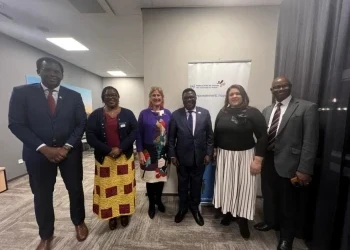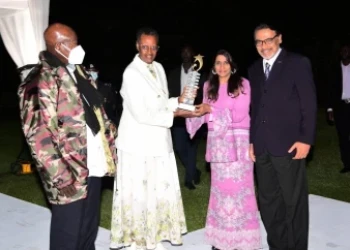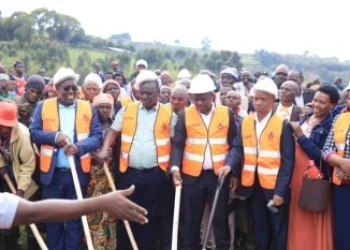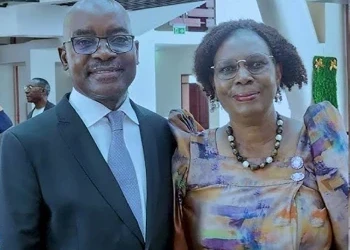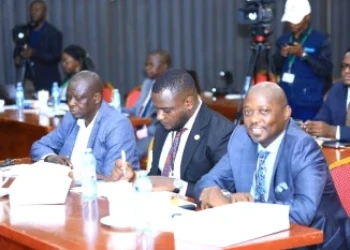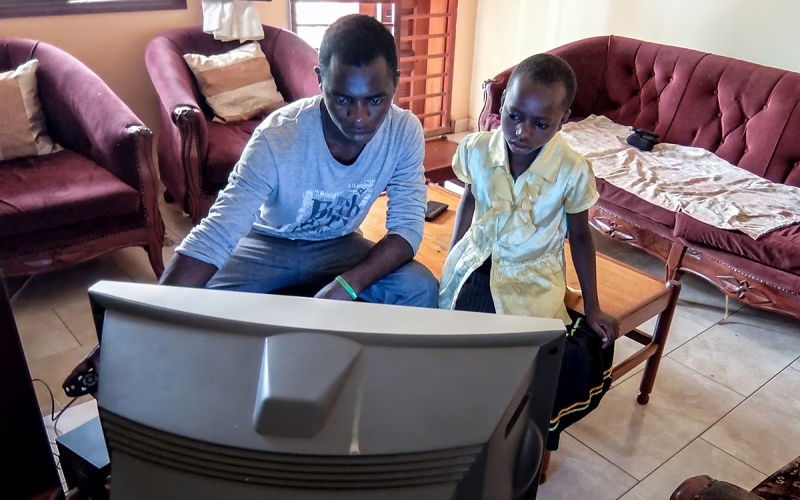
In the era preceding the dominance of social media, television served as our primary source of news and information, alongside radio and newspapers. It was a fixture in our homes, shaping our living spaces and influencing our daily lives.
During my college days, like many of my peers, owning a television was a significant milestone. When I received my first Faculty allowance, affectionately known as 'Boom,' I invested it in a 21-inch color TV. This simple purchase granted me access to a variety of local and even some international channels via a basic outdoor antenna. No subscriptions, decoders, or satellite dishes were required – just a TV set, a power source, and an antenna.
Television broadcasters, equipped with their transmitters and broadcast towers, reached audiences far and wide. Larger stations like UBC and WBS covered the entire country, while smaller ones like LTV and Sanyu TV catered to more localized viewership.
However, everything changed on June 17, 2015, when Uganda transitioned from analog to digital TV in compliance with international regulations. The move was lauded for its potential benefits, including the 'digital dividend,' new business opportunities, enhanced picture quality, and support for local content.
The reality, however, has been a mixed bag. The digital dividend materialized, opening up frequency spectrum for telecom companies to utilize for LTE. Yet, the anticipated new business opportunities have yet to fully materialize. Although more TV stations have emerged, improvements in picture quality and local content have been modest due to the requirement that all content pass through TV channel aggregators like Signet, posing challenges in maintaining high quality.
The UBC Challenge
At the start of the digital migration, UBC was entrusted with the role of the sole signal distributor for the initial five years, with plans to separate content and signal distribution services. The Uganda Communications Commission (UCC) supported this initiative by financing and establishing 17 broadcast sites nationwide.
Regrettably, only the Kololo DTT transmission system in the greater Kampala area remains operational today, despite grappling with aging equipment and intermittent power problems. The other 17 sites in different regions have lain dormant for years. Consequently, for most Ugandans outside Kampala, watching TV entails paying a 'subscription tax' to pay-TV providers in South Africa and China, sidelining Ugandan content and culture.
Signet's Struggles for Self-Sustainability
In its current state, Signet faces obstacles in becoming self-sufficient. TV stations are expected to pay twelve million Ugandan shillings each month for carriage fees. However, limited reach and other challenges restrict their revenue. Compounding the issue is the incomplete separation of Signet and UBC as originally planned. Consequently, funds meant for supporting signal distribution end up servicing UBC's debts.
Even in Kampala, Signet's outdated equipment struggles to accommodate the more than 49 licensed stations, limiting it to broadcasting only 36 channels with lower picture quality. Additionally, power outages in Kololo lead to channel number changes, requiring viewers to rescan channels and endure buffering delays. Sometimes, the picture arrives without sound, or worse, not at all, necessitating late-night calls for signal restoration.
The Challenge of Hybrid License Fees for Free-to-Air
Most Ugandan TV stations aim to cater primarily to local audiences while reaching international viewers via digital platforms. Signet's limitations force station owners to obtain hybrid licenses to reach their target audience. Although a regular Free-to-Air license costs just 2700 USD, TV owners now must pay a hefty 46,000 USD and 22,000 USD annually for a hybrid license, which they don't truly need but are compelled to acquire to be carried by pay-TV platforms.
This predicament is exacerbated by pay-TV providers often excluding Free-to-Air channels from their offerings, despite earlier promises by the Minister of ICT. Consequently, citizens are forced to pay for pay-TV subscriptions, even if their preferred channels are local ones that should be freely accessible. This leaves those with limited means without access to information that should be readily available through Free-to-Air TV.
The Government's Role in Supporting Signet
Access to information is vital for our nation's development. Television plays a pivotal role in communicating national programs, important announcements, and emergency alerts. With the proliferation of affordable TVs and improved electricity access nationwide, television continues to shape Ugandan culture and lifestyle.
It is imperative for citizens to have unrestricted access to Free-to-Air TV. The parliamentary committee on ICT recommended last year that Signet be separated from UBC and be allocated 17 billion Ugandan shillings to ensure its full functionality. Recent information suggests that funds have been earmarked for this purpose in the budget. Ensuring Signet's capacity to provide TV services to citizens across the country is crucial. If direct government funding proves challenging, the UCC could potentially utilize the Rural Communication Fund for this purpose.
By Innocent Nahabwe
The writer is a media owner and the Vice-Chairperson of NAB.
Comments (0)
📌 By commenting, you agree to follow these rules. Let’s keep HowweBiz a safe and vibrant place for music lovers!



